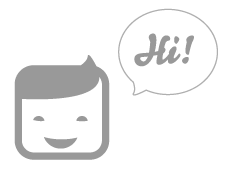App World
My stream

Blockchain Technology Course-Free Blockchain Info
Blockchain, chainblock or block chain. It doesn’t matter how do you want to call it or write it. Let’s get dee...
Free

Store review
Blockchain, chainblock or block chain. It doesn’t matter how do you want to call it or write it. Let’s get deep and understand this concept.
What is the blockchain? Among other things, it is one of the buzzwords of recent times. The chain of blocks is also a concept that raises a huge revolution not only in our economy, but in all kinds of areas.
Understanding what this chain of blocks is not so difficult, and since this concept is being used more and more, we wanted to make a kind of quick introduction to the blockchain , to explain what it is, how it works and what is the revolution that it poses the chain of blocks.
A chain block or block chain , known as blockchain , is a data structure in which the information is grouped in sets (blocks) to that meta-information is added to another block of the previous chain in a time line, so that thanks to cryptographic techniques, the information contained in a block can only be disowned or edited by modifying all subsequent blocks. This property allows its application in distributed environment so that the data structureblockchain can act as a non-relational public database that contains an irrefutable historical information.
The chain of blocks is a record of all transactions that take place “packaged” in blocks that the miners are responsible for verifying.
Later they will be included in the chain once validated and distributed to all the nodes that make up the network ( currently, the chain of blocks occupies about 40 gigs ).
Blockchain is a technology that allows the transfer of digital data with a very sophisticated coding and in a completely secure way . It would be like the book of accounting entries of a company where all the entries and exits of money are registered; in this case we are talking about a book of digital events .
In recent years, the promise of blockchain technology has led to the submission of numerous patent applications for inventions related to such technology. Many of the patent applications were initially filed by banks and financial institutions, but with the popularization of blockchain technology, applications are coming from a wide range of sectors.
Lately, blockchain technology and related technologies for the creation of distributed records are a hot topic; Many sectors are exploring the possibilities of these technologies and new applications of the block chain arise almost daily. However, how could these technologies be used in the context of the law and practice of intellectual property?
The chain of blocks, a kind of decentralized ledger, is best known for being the technology that supports Bitcoin, one of the most hot cryptocurrency today.
Blockchain: A technology that can change everything.
This is the fundamental principle behind the chain of blocks or Blockchain , a technology that has the power to change forever our relationship with the digital world.
The experts compare the arrival of the blockchain with milestones such as the integration of computers in domestic use or the development of the Internet, that is, a system that will change our way of understanding business and society.
One of its greatest potentials is in the so-called smart contracts or intelligent contracts, that is, with blockchain technology agreements and transactions can be made in a trusting manner without revealing confidential information between the two parties and without the need for ” arbitrators “, such as payments to distributors or, for example, the rental of a car online.
In this course you can find the following subjects:
* What is blockchain
* Blockchain technology
* Blockchain network
* Blockchain meaning
* Blockchain concept
* Private blockchain
* Blockchain future
* Blockchain transaction
Blockchain Technology - Understand the hottest subject exists today now!
Last update
March 12, 2020




 Facebook
Facebook Twitter
Twitter Google plus
Google plus